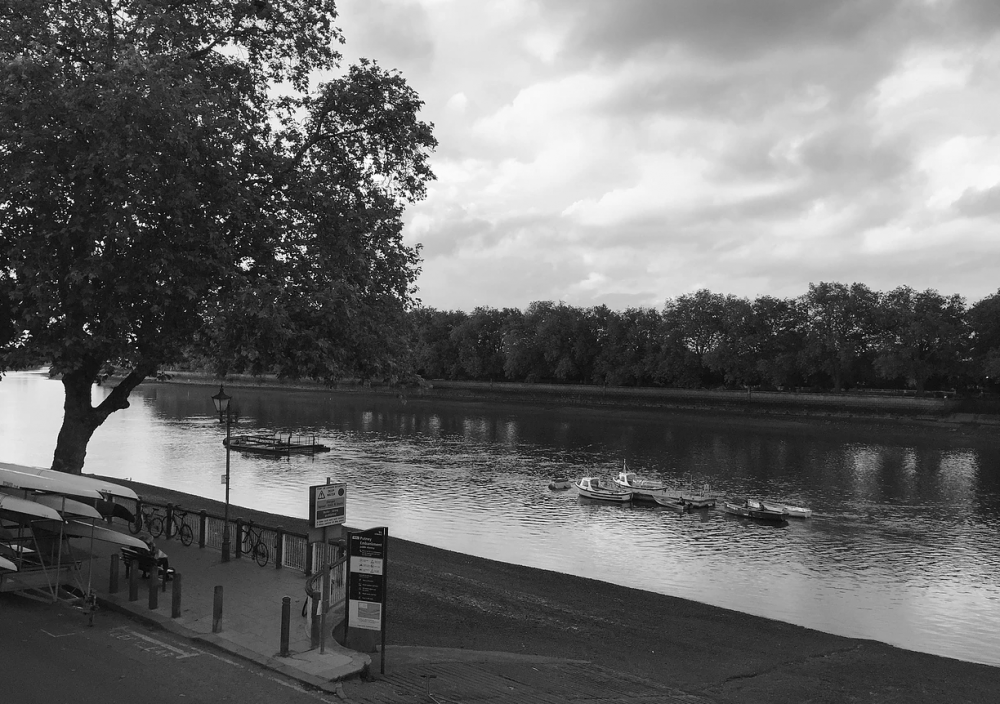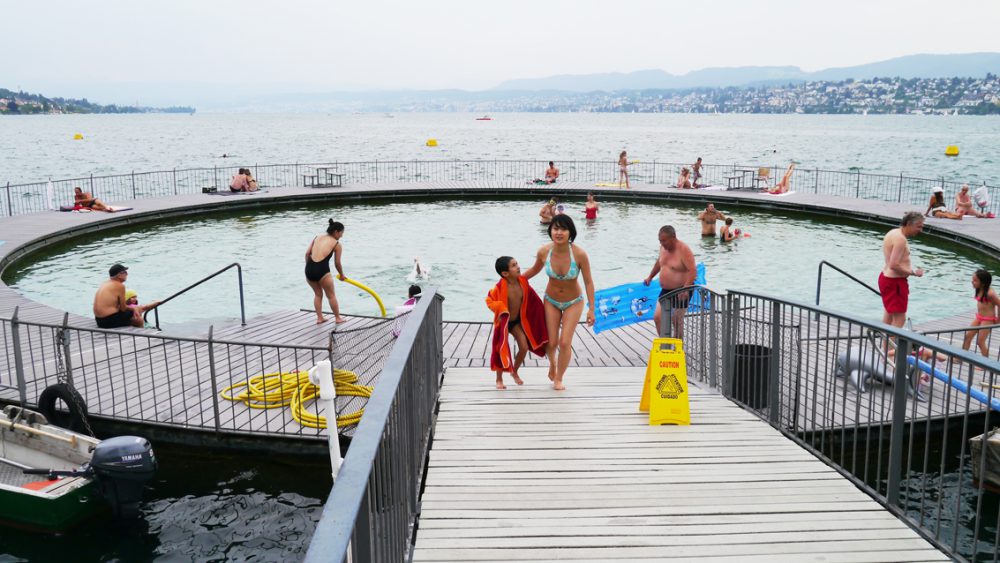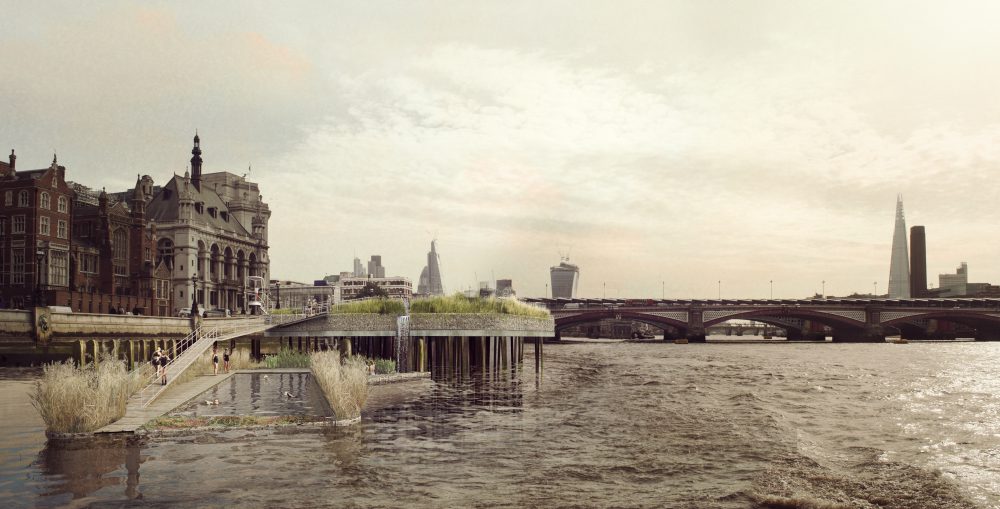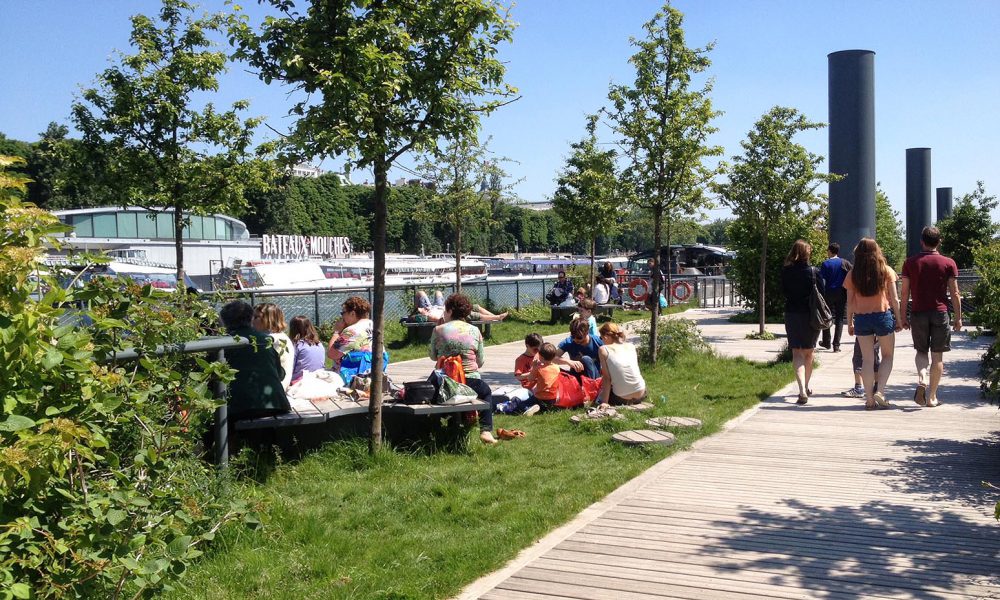3:15 pm
How does Thames Baths keep Londoners healthy?
Chris Romer-Lee, co-Founder and CEO of Thames Baths C.I.C. explains why Thames Baths is so important to London and Londoners.
The River Thames is not generally regarded as the healthiest of places. As a child living in Putney, I used to love spending time by the river with my sister, examining the flotsam and jetsam along the foreshore. However my parents were adamant that foraging for treasure along the river edge was dirty and dangerous. We were constantly being warned against touching anything, with the threat that we would end up having our stomachs pumped if we weren’t careful. So like many Londoners, I grew up fascinated by, but wary of, the River Thames.

A 2013 Open Call by the Royal Academy of Arts and The Architecture Foundation asking for ideas addressing the future of the Thames reignited my interest in the river. I had just come back from a trip to Zurich, where my family and I had enjoyed swimming in the city’s lakes. That glorious experience of urban swimming underscored the disconnect between Londoners and the mighty river flowing through the city.

So the idea of the Thames Baths was born. We submitted a proposal for re-introducing swimming in the river once the Thames Tideway Tunnel (the so-called ‘Super Sewer’) was complete and water quality improved. I say re-introduced, because swimming has historically been an important feature of Londoners’ relationship with the Thames. (I’d thoroughly recommend Caitlin Davies’ excellent Downstream: A History and Celebration of Swimming the River Thames if you’re interested in finding out more about this).

Our plans really caught people’s imaginations, much to our surprise initially. But thinking about it, I can see why the idea has such appeal. The Thames is an iconic aspect of London, while swimming is one of life’s simple pleasures. All you need is some water; it’s accessible for anyone, whatever your levels of fitness or mobility. There is something magical about the two things being combined.
We’ve had a lot of enthusiastic and expert input and our plans have evolved. In our current proposals, the Baths consist of a six-lane 25m pool, a training pool, a retail kiosk, a café, changing rooms, as well as ample open decking to enjoy the views. We have figured out the technology to naturally filter the river water to create bathing water that meets the highest possible bathing standards (FLL Standards). So there’s no need to wait for the ‘Super Sewer’, the Thames Baths can be built now. The water for the pools will be taken from the Thames passed through the perimeter planting and a below deck filter system. With the impurities removed and free of chemicals the water can be heated to 24 degrees for year round swimming. The pool’s filter system can cope with 600 swimmers a day, whilst there is room on the open deck public spaces for considerably more. Currently we have identified potential sites within central London. We’re now completed a Pre-Planning Report, started consulting with stakeholders and anticipate submitting a planning application for the most suitable site in 2017. We are receiving support but are looking for any interested companies or individuals to make contact if they want to be part of this project.
Keeping Londoners healthy is a key reason for making Thames Baths happen as soon as we can. There is strong evidence of the benefits of good quality outdoor spaces to public health. The Marmot Review into health inequalities concluded that well-designed and maintained green spaces can encourage social interaction, exercise, play, and contact with nature. Studies have shown that exercising outside can have more positive mental health benefits than other types of exercise and that the psychological benefits of jogging in an urban park are greater than street jogging. Swimming at Thames Baths will similarly enhance Londoners’ physical and emotional wellbeing.

The Marmot Review argued that it is not enough to simply provide more outdoor spaces, attention also needs to be paid to their design and quality. London’s largest public space deserves nothing less than outstanding design, and this is what we are trying to achieve with Thames Baths. For instance our designs incorporate aquatic planting, intimate seating areas closer to the water, as well as higher look-outs and vantage points. Our aim is for the Baths to remain open all year round (through gentle warming via a heat exchanger), providing a refuge for wildlife as well as a public space for Londoners to enjoy the river from. As the Marmot Review recognised, public spaces also have social benefits (which link into greater emotional wellbeing) by bringing people together.
Thames Baths is driven by the belief that it is every Londoner’s right to have access to the River Thames. Thames Baths has been set up as a social enterprise (we are a Community Interest Company). Our intention is that it will cost the same to swim in the lido as the nearest community pool. We want access to the decked areas to remain free at all times, providing an extension to the public space along the river. The Marmot Review noted that children and older people in particular often feel excluded from public spaces. We are particularly keen to ensure that both groups use the Baths, and are proposing free swimming for under 6s and over 60s, as well as link-ups with inner city schools.

Globally, urban waterways are having a renaissance. Copenhagen led the way following a successful clean-up of Copenhagen Harbour in 2002 when the first harbour bath was completed. Now it’s the turn of Londoners’ to reap the health – and many other – benefits of a pool (or pools) in the Thames. In the meantime, I’d thoroughly recommend a brisk walk or leisurely amble along the river’s foreshores to appreciate one of London’s greatest assets.
• bluespaces
• caitlindavies
• cities
• copenhagen
• greenspaces
• health
• healthandwellbeing
• marmot
• marmotreview
• publicspace
• River Thames
• riverthames
• Swimming
• thamesbaths
• thamestideway
• tideway
• wellbeing